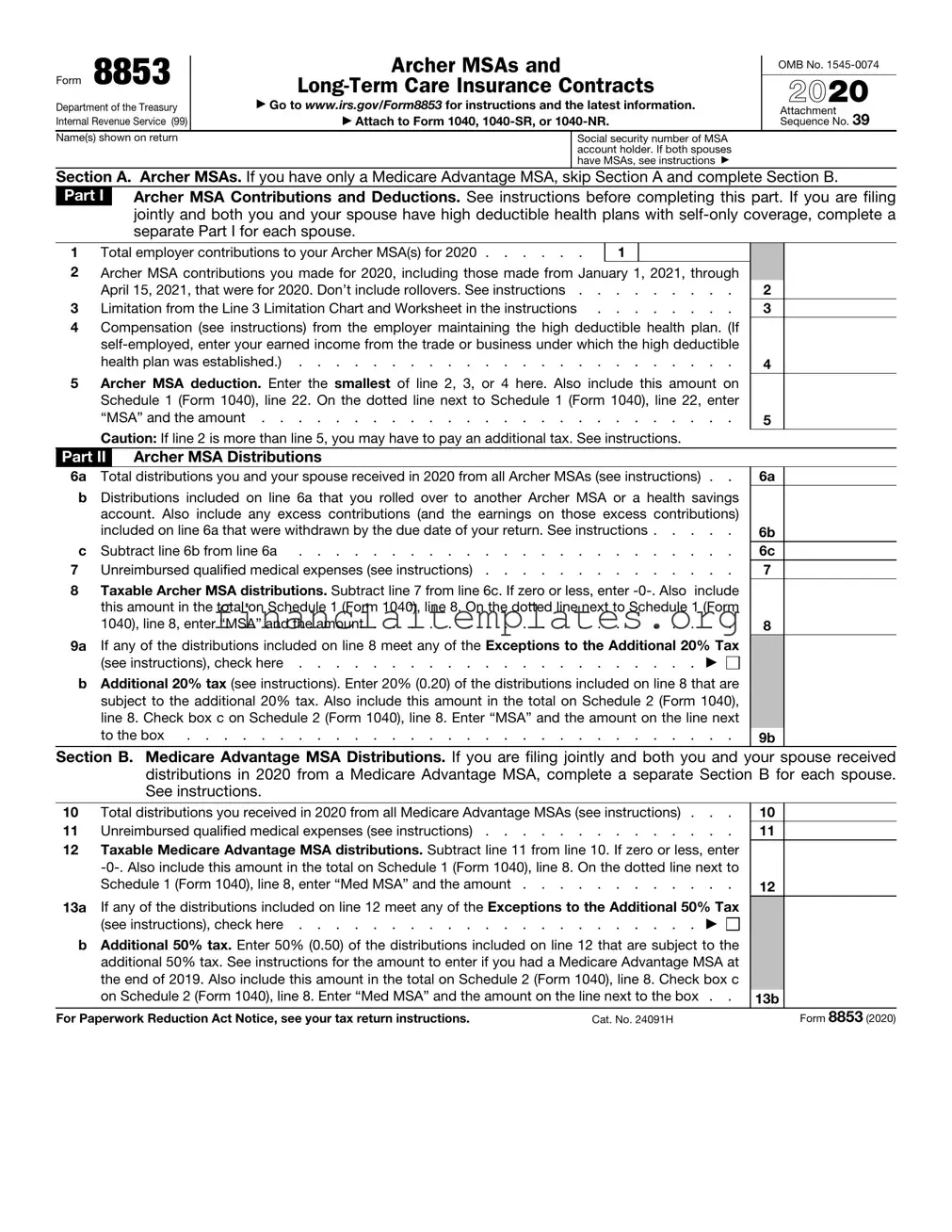The IRS Form 8853 is a detailed document used for reporting information related to Medical Savings Accounts (MSAs) and Long-Term Care contracts through an MSA. Its structure and purpose share similarities with several other IRS documents, designed to cater to specific tax situations and benefits. For instance, the IRS Form 8889 is quite similar to Form 8853 as it deals with Health Savings Accounts (HSAs). Both forms are used to report contributions and distributions associated with their respective accounts, emphasizing the tax implications of these movements. However, while Form 8853 is specific to MSAs and LTC contracts, Form 8889 is dedicated exclusively to HSAs, reflecting the nuances of different healthcare savings options.
The IRS Form 5329 is another document closely related to Form 8853, with a focus on additional taxes on retirement plans, including those on MSAs. While Form 8853 reports contributions and distributions for MSAs and LTC contracts, Form 5329 is broader, covering various retirement accounts and the additional taxes that may apply due to excess contributions or insufficient distributions. This form highlights the fine line between specific account activities and broader tax implications.
Similarly, the IRS Form 1040 Schedule H shares a relationship with Form 8853 in terms of reporting requirements tied to employment taxes for household employees. Though not directly related to healthcare or retirement accounts, the connection lies in the detail and specificity of reporting individual-specific financial information to the IRS. Both forms serve as avenues for taxpayers to report specific types of financial activities, ensuring compliance with federal tax laws.
The IRS Form 8962, used to reconcile or claim the Premium Tax Credit (PTC), also mirrors Form 8853 in its role of reporting specific tax benefits related to healthcare. Form 8962 is critical for individuals who purchase health insurance through the marketplace, allowing them to adjust or claim tax credits. Like Form 8853, which deals with specific health-related savings and spending, Form 8962 addresses the fiscal implications of healthcare choices on an individual’s taxes.
Another comparable document is the IRS Form 5498, which reports IRA contributions. Both Form 5498 and Form 8853 involve the reporting of contributions to tax-advantaged accounts, although they cater to different types of accounts. Form 8853 focuses on MSAs and LTC arrangements, while Form 5498 pertains to various types of Individual Retirement Accounts. The similarity underscores the IRS's role in managing and monitoring tax-advantaged savings avenues.
The IRS Form W-2 is fundamentally about reporting wages and taxes withheld by employers, but it shares a connection with Form 8853 in the broader context of reporting financial information crucial for tax filing. Both forms are pivotal for individuals to accurately complete their tax returns, albeit with Form W-2 focusing on employment income and Form 8853 on specific healthcare savings accounts. The necessity for detailed financial reporting unites them in the ecosystem of tax documentation.
In essence, while each of these forms caters to unique aspects of financial and tax situations, they collectively embody the intricate nature of tax law and compliance. Whether it's managing healthcare savings, reconciling tax credits, or reporting employment income, these documents underscore the critical role of detailed financial reporting in sustaining the integrity of the tax system. The connection between Form 8853 and other IRS forms highlights the diverse considerations taxpayers must navigate to comply with U.S. tax laws.


